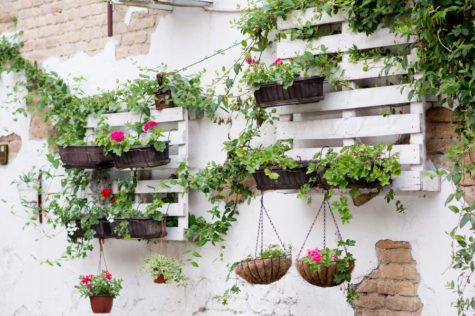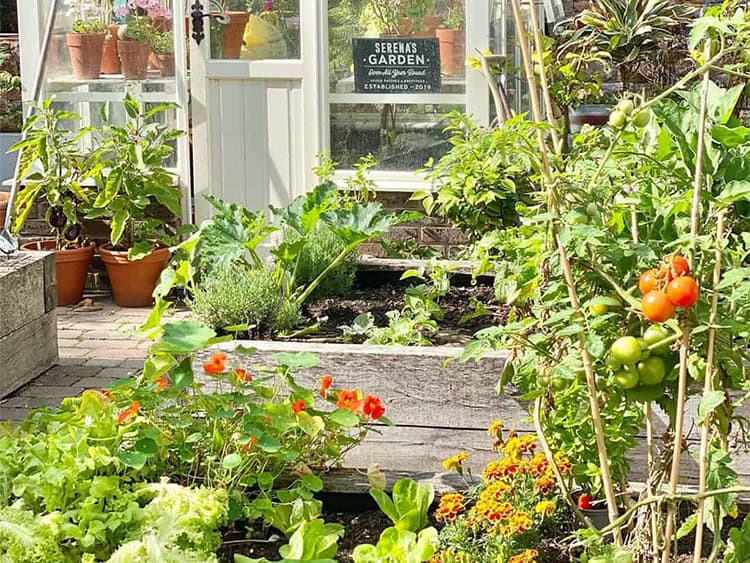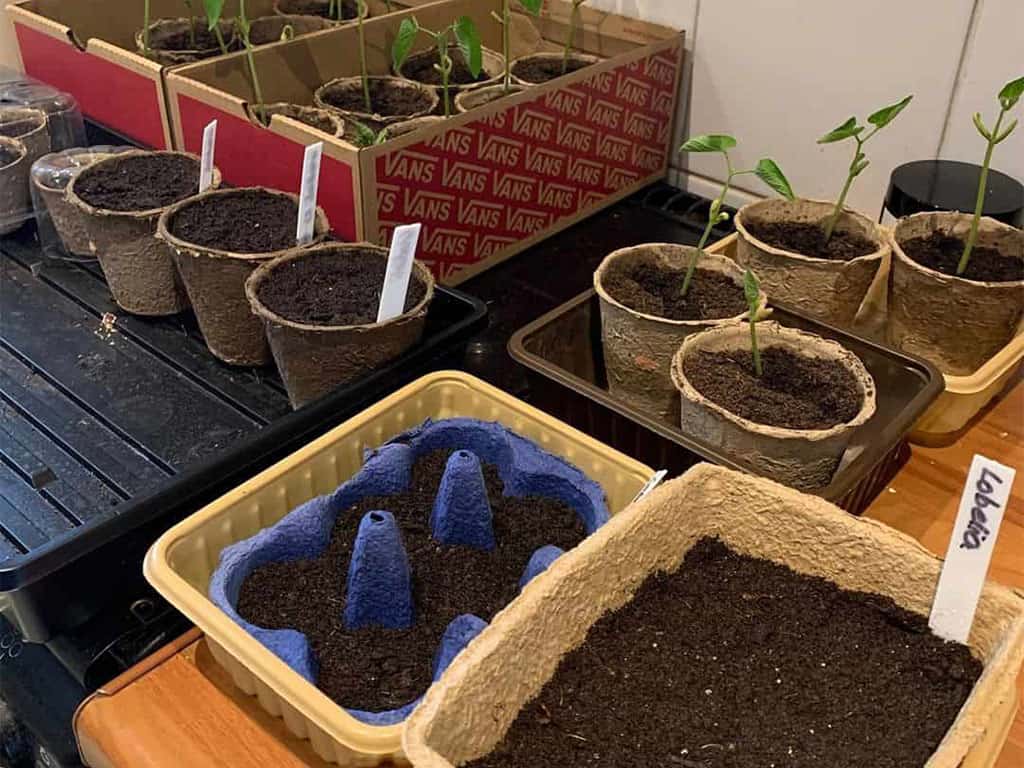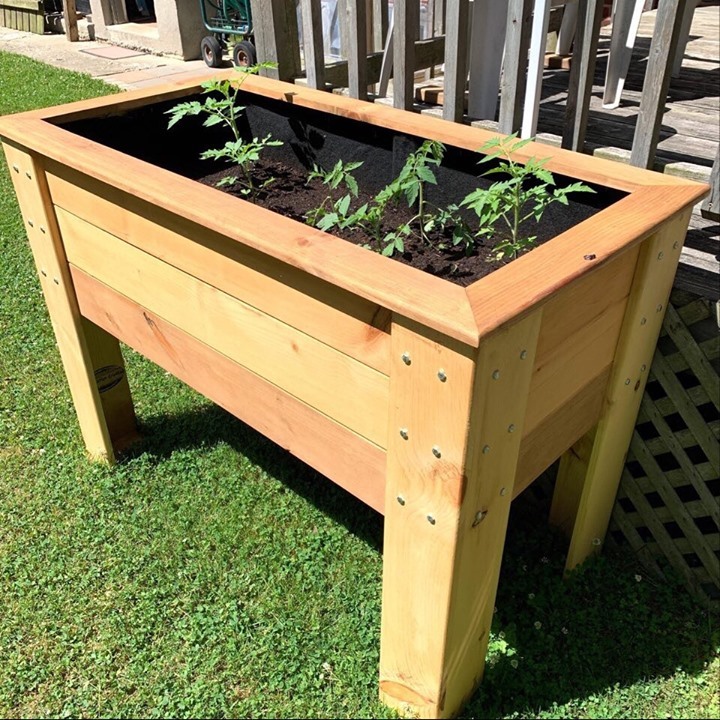If you’re thinking of using wood for a DIY project, do you usually check for any sign that certifies the wood is grown sustainably?
If you burn wood as fuel, can you confidently trace its origin? This article will explain the many certifications of sustainable wood and how you can check its environmental credentials.
I apologise in advance for the acronym usage in this article. FSC and PEFC are defined below! So if you spot either the FSC or PEFC logos on the wood you buy, this is a sure sign that it has been cut from forests that are responsibly managed, socially beneficial, environmentally appropriate, and economically viable.
The Forest Stewardship Council (FSC) and the PEFC are internationally recognised, not-for-profit organisations which promote responsible management of forests all over the world. Their logos are found on sustainably sourced wood.
You may also spot the “Grown in Britain” and Scandinavian Nordic swan logos on sustainably sourced wood, highlighting wood that’s grown closer to home than the Brazilian rainforest.

Credit: Unsplash
Did you know?
- The UK is the second biggest importer of wood worldwide, with China being the first.
- 80% of the wood in the UK is from imported sources. Considering the size of both China and the UK, this figure is truly staggering.
- Woodland cover in the UK is quoted at 13%; most of Europe is about 33%. See more about this below.
What type of wood can be grown in the UK?
Ash, beech and silver beech, cedar, cherry, cypress, eucalyptus, holly, horse chestnut, (Douglas) fir, larch, lime, magnolia, oak, Scots pine, silver birch, whitebeam, and walnut can all be grown in the UK.
What does sustainable mean in terms of forestry management?
The FSC and PEFC set the international standards for the sustainable management of forests across the globe. In the UK, the Forestry Commission work to protect, expand and promote sustainable management of our woodlands.
Sustainable is one of the main environmental buzzwords right now and for good reason. Sustainably grown wood comes from forests that are managed responsibly; preventing damage to wildlife, ecosystems and trees.
Let’s look at the main regulatory bodies for the provenance of wood supplies. The labels certify that the wood was grown to acceptable standards, without damaging natural forests.

FSC (Forest Stewardship Council) is an international, non-governmental organisation, dedicated to promoting responsible management of the world’s forests. FSC aims to counteract the destruction of trees illegally and limit the use of harmful chemicals in forests. Their labelling helps consumers to identify wood that has been sourced sustainably.

The PEFC Council (Programme for the Endorsement of Forest Certification) is a worldwide organisation promoting sustainable forest management through forest certification and labelling of forest-based products. Products with PEFC accreditation deliver confidence that raw material originates in a sustainably managed forest.

Grown in Britain is a not-for-profit company, established in Bristol in 2013. See more about this organisation below.

The Forestry Commission is a non-ministerial government department responsible for the management of publicly owned forests and the regulation of both public and private forestry in England. It was formerly also responsible for forestry in Wales and Scotland, however on 1 April 2013, Forestry Commission Wales merged with other agencies to become Natural Resources Wales, whilst two new bodies were established in Scotland on 1 April 2019.

Plant Healthy is an organisation including tree growers, nurseries, and the Forestry Commission which aims to check the biosecurity of any plant material sold and planted in the UK. This will help to avoid the spread of pests and diseases from abroad.
How do we use wood in the UK?

Credit: Unsplash
Wood is used outdoors for fencing, decking, furniture and playhouses. Indoors, it’s used for furniture, flooring, doors and myriad other items. In the construction industry wood is used to build frames and beams although steel and metal frames are becoming more common. It can also be used as cladding on buildings.
Wooden pallets are used to protect products in storage and transit and unless they are re-sold, re-used, or upcycled a lot of this wood ends up going to waste.
Wood is used in woodburning stoves and open fires. Biofuel and pellets are made from wood for industrial use.
Wood is present in many products, such as plywood, MDF, and imported paper products like plasterboard, newspaper, and cardboard.
A qualified forester’s viewpoint
I spoke to Dave Preskett, a qualified forester from Bangor. He informed me that the UK is the second-largest importer of timber (after China) and that 80% of that timber is imported.
Europe has about 30% forestry cover and the UK is claimed to have 13%. Dave sees that figure as misleading because, since the early part of this century, the term ‘woodland cover’ now includes all wooded areas, no matter how small.
Satellite technology picks up the green of any tree canopy so think of the trees growing in your garden, in public parks, golf courses, neglected woodlands, and roadside plantings in addition to what we all consider to be true forests.
“In the UK, no more than 5-7% is true forest cover”, according to Dave. This is largely due to the Industrial Revolution, in which timber was used in manufacturing and for fuel, leaving large areas of the countryside deforested. These became grass pasture for sheep and grouse.
He tells me 60% of the coniferous forests in the UK are Sitka spruce, non-native trees, originally sourced from a north west Pacific island (Queen Charlotte’s Island) in the 1800s.
The Forestry Commission statistics only differentiate felled timber volumes as either hardwood or softwood. Hardwood is a small part of the market. Softwood trees are dominated by Sitka spruce.
Dave comments that the timber quality of the wood from Sitka spruce is very poor compared to Norway spruce. However, they can be densely planted – about 2,750 trees at 1mx1m spacing per hectare is the norm for Sitka spruce. They’re fast-growing and can have a 50-year life cycle, locking in carbon as they grow.
Native UK hardwood trees like oak and chestnut need a lot more space and time to mature. In order to lock carbon up in trees, we need to retain the timber products we make for generations. The uplands where Sitka spruce is often grown only support one sheep per hectare. Dave’s final comment is “We need a massive tree-planting programme in the UK to lock up carbon.”
A final discussion was had about the transport of wood and how a tree grown in the UK has no extra carbon miles added to it, which takes me nicely onto Grown in Britain.

Image credit: @growninbritain
Forest management with Grown in Britain
Rachel Lawrence from Grown in Britain (GiB) emphasises that her organisation is very keen to see more woods brought into long term management and a thriving UK timber sector. GiB certifies the whole chain of custody for timber e.g. sawmills, furniture makers and construction, not just the woods.
“We want people to know the Grown in Britain logo because that way the timber they are buying is sustainable, legal and home-grown.” Effectively, good management is rewarded by certification which can result in a range of benefits like carbon sequestration, timber, improved biodiversity and flood management.
Grown in Britain is a not-for-profit company that gets involved in research projects with several partners. They are currently working closely with London Metropolitan University and Birling Estate on the Home Grown House project.
Using domestically grown timber and round-wood thinnings, the project is investigating how local, coppiced wood can be used in low-cost house construction and the locally grown sweet chestnut timber is being tested for its durability and mechanical properties.
Coppicing is a traditional method of chopping some young wood stems periodically while allowing the forest to continue growing.
Rachel explained GiB is also extremely concerned about plant biosecurity in the UK, as pests are most commonly introduced through the movement of live plants.
GiB is a certification body for the Plant Healthy Certification Scheme and she encourages nurseries, garden centres, plant retailers and public bodies to take the online assessment on the Plant Healthy website to sense check their level of risk. The Plant Healthy mark is only awarded to a business or a specific site.
“This is because on products, as soon as that product moves, the risk also changes. Plant Healthy aims to make the movement of all plant material more biosecure”. 16 well-known UK companies have joined the scheme including Barcham Trees, English Woodlands, Wyevale Nursery and many more.
GiB is working in partnership with the Morgan Sindall Group, Blenheim Palace and Nicholsons Nurseries in planting new woods in Oxfordshire, which will incorporate 28 carefully selected varieties of trees.
These include hornbeam, lime, sycamore, wild cherry, oak, Norway maple, alder and beech in the mixed woodlands with an understory of woody shrub species including hazel, hawthorn, viburnums, euonymus and dogwoods to create a diverse and self-sustaining eco-system.
Experimental species will also be included to assess climate resilience and a small percentage of conifers planted to provide winter habitats for wildlife.
How can I make sure the wood I use is from a sustainable source?

Image credit: @brittpixx
1. Trace the timber – Where does it come from?
Tracing the timber you buy to a forest with a fully implemented forest management plan in line with the UK Forestry Standard (UKFS) requirements and guidelines is essential.
- The FSC or PEFT logo assures you that the wood is from a well-managed forest.
- If the wood also contains the Grown in Britain logo, you know that it’s sourced from the UK.
- If you are a small woodland owner trying to get documentation for your wood, the Forestry Commission can offer some guidance.
- Newer, uncertified forests can apply to the UK Woodland Assurance Standard (UKWAS). Passing this standard shows that the wood has sustainable credibility. If a woodland is assessed by either FSC or PEFC against the UKWAS, timber can be sold as FSC and /or PEFC certified.
2. Check with local councils and businesses
Councils are advised by government policy and these days everybody wants to show their green credentials. Councils should have policies for locally grown hardwood for use for seats and benches and also keep the environment in mind for the management of their green spaces.
- Check the policies on your local council’s website and if you have any doubts, get in touch with them. Most councils try very hard to recycle anything possible and the main message with wood is don’t buy new, try to re-use if you can.
3. Check your woodfuel meets the Timber Standard for Heat and Electricity (TSHE)
Wood biomass. This is a standard to show how the land criteria will apply to any supplier who generates heat and electricity from woody biomass under the Renewable Heat Incentive, Renewables Obligation, and Contracts for Difference.
- So make sure to ask your wood supplier how they manage their forest and get them to tell you about their storage. Wood for your burner needs to have matured for at least 2 years so that the moisture content is reduced. Your supplier can tell you a lot about how they manage their woodland.
- If your supplier does not have a certification but you’re sure it is well managed, advise them to contact the Forestry Commission, or UK Woodland Assurance Standard (UKWAS). See number 2 above.
How can you help?
- Consider if you really need virgin wood. Could you use some second-hand wood or upcycle pallets and old garden furniture?
- Keep your wood products for as long as possible. If we use old wood to make furniture and keep that table/wardrobe for our lifetime, then the carbon sequestration works and it can be passed down from generation to generation. If you dump the sofa for a more modern one, all that carbon sequestration is wasted. Put it on freecycle.com and make sure it gets a new home!
- Only buy wood with the FSC, PEFC, or similar logos to ensure that it is grown in a managed forest. You are the consumer and your money counts.
- Make your own wood fuel. Dry your own wood for 2 years to decrease the moisture content. This is very sustainable and involves no travel miles. Branch prunings or vines make excellent kindling. Use the ash created to fertilise your plants too.
- Consider attending some workshops about the management of any forest you are responsible for. See FSC and links below.
- Buy some land to re-plant with native trees – speak to the organisations listed in this article for advice. Many local owners are working to create more sustainable wood for fuel and create recreational space to enjoy.
What treatments are used on wood and how sustainable are they?
A range of treatments from chemical-free thermal heat treatment to staining and oiling are available to prolong the life of wood.
If using paint, opt for low VOC (volatile organic compounds) formulas and choose natural resins over harmful varnishes.
Teak oil is fantastic for wood maintenance. However, oil needs to be re-applied annually so make sure you use an oil that is sourced locally if possible.
Some good news stories about timber and forests

Image credit: @nationaltrustsouthwest
- In Finland, experiments are converting Norway spruce to a cotton-like textile. Cotton is a very water-hungry crop and uses a lot of pesticides. By substituting a locally grown tree, this is good news both for the textile industry and well-managed forests.
- Pesticide use can be restricted by growing pest-resistant trees. Some cedar trees have a very strong scent, which actually deters pests. Cedar of Lebanon is used as exterior cladding in southern Europe and its ability to repel insects is the main reason.
- Partnerships like Grown in Britain along with universities, companies and private landowners are happening all over Britain. You can find one locally.
- Small local woodland areas can gain accreditation (using the information above) and funding to manage them but you need committed people with time in the team.
- Local councils. You can make your opinions known in their timber procurement policy. Ask your council to specify locally grown hardwoods to make benches in parks and encourage them to join the Plant Healthy movement for sustainable nursery plants for parks and public gardens.
Some websites to help
- CPET resources for government procurers, suppliers and businesses – GOV.UK
- England Woodland Creation Offer – GOV.UK
- FSC
- Forestry England
- Grow in Britain

Save this pin for later






